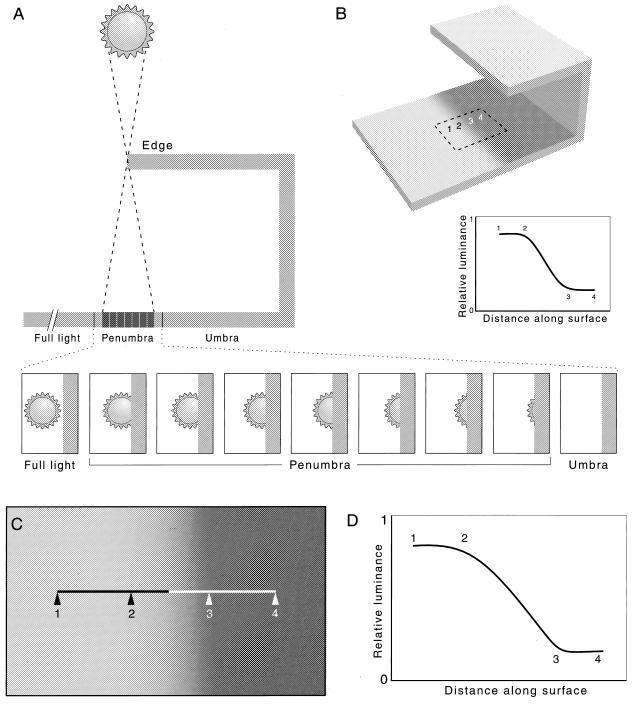Figure 2.
Luminance gradients associated with the penumbras of shadows cast by the sun. (A) Diagram of a shadow-casting object between the sun and the surface on which the shadow is cast. Enlargement of the penumbral region shows the fraction of the sun’s disk exposed at each point along the surface. Penumbral gradients arise as a result of the progressive diminishment of sunlight reaching the surface between the region of full illumination and the region of full shadow (the umbra). Whereas the region in full light receives illumination from the entire disk of the sun, the portion of the surface at the shadow’s edge is deprived of light in proportion to the occlusion of the disk by the shadow-casting object. (B) View of the surface in A, showing the appearance of the penumbra and the luminance profile it generates (Inset). The gradient shown in the inset was calculated according to the geometrical argument in the appendix of ref. 19 (specifically from Eq. 11); numbers indicate corresponding points. (C) Digital photograph of the penumbra cast on a flat surface by an edge about 2 m distant, with the sun at approximately its highest point. Line indicates the orientation and extent of the luminance profile measured photometrically in D. (D) Empirical confirmation of the calculated penumbral profile in B by photometric measurement (see Methods); numbers 1–4 indicate corresponding points in C and D. Whereas the luminance profile generated by the Mach stimulus in Fig. 1 is linear, the gradients associated with the penumbras generated by sunlight are sigmoidal.

